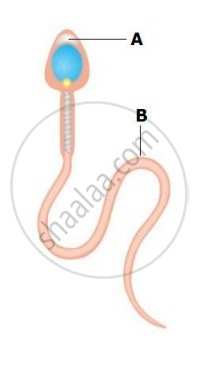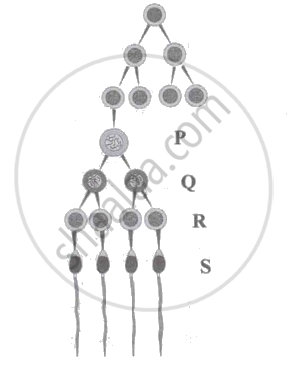Advertisements
Advertisements
Question
If newborns are produced at the age of menopause, they may be with some abnormalities. Why?
Solution
- A female has millions of oocytes at the time of birth and new ova are not formed thereafter.
- Menopause occurs at approximately 40-50 years of age and hence fewer numbers of eggs are present with reduced fertility since the oocytes have aged.
- Their ability to divide diminishes and they may not be able to complete meiotic division properly.
- Fertilization of such oocytes may result in the production of genetic abnormalities (like Down’s syndrome) in offsprings.
Hence, if newborns are produced at the age of menopause, they may be with some abnormalities.
APPEARS IN
RELATED QUESTIONS
Give the name and function for ‘A’ and ‘B’ from the diagram given below

Name the hormones involved in regulation of spermatogenesis.
Fill in the blank.
---------- type of reproduction occurs without fusion of gametes.
Explain the structure of secondary oocyte.
The male sex hormone testosterone is secreted from ____________.
At what stage of development are the gametes formed in newborn male and female?
Describe the structure of the human ovum with a neat labelled diagram.
Which is the correct order of steps occurring during spermatogenesis?
Identify the correct stages (P - S) in the given diagram of spermatogenesis.

The human male gamete is usually about ______ in length.
How many functional sperms and how many ova will be formed by a primary spermatocyte and a primary oocyte.
A reaction of granules content which harden the zona pellucida and ensures sure block to polyspermy is ______.
How many sperms are formed from 4 primary spermatocytes?
Penetration of the sperm in the ovum is followed by ______
Follicular atresia is:
Germ cells present in the seminiferous tubules undergo ______
The mother germ cells are transformed into a mature follicle through series of steps. Provide the missing steps in the blank boxes.

What is the difference between a primary oocyte and a secondary oocyte?
Answer the following:
How many primary spermatocytes and oocytes are required for the formation of 100 spermatozoa and ova?
Distinguish between human sperm and ovum.
